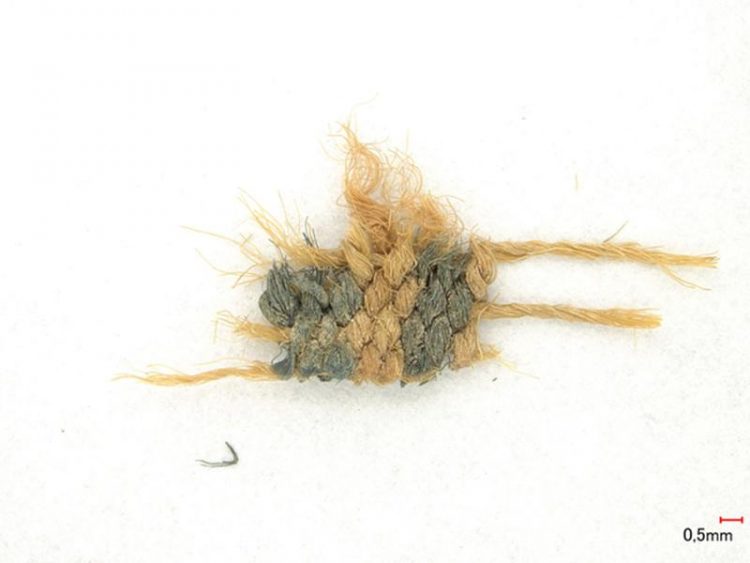New study shows people used natural dyes to colour their clothing thousands of years ago

Samples like these were examined by the chemists from MLU. Annemarie Kramell
Chemists Dr Annemarie Kramell and Professor René Csuk from MLU examined two ancient textile samples. One comes from the ancient Chinese city of Niya and was probably once part of a shirt. It is over 2,000 years old.
The other sample comes from Peru and dates back to 1100 to 1400 AD. It was produced by the Ichma people who lived in Peru at that time. Today, there is often little evidence of the colourfulness of such ancient clothing.
“Time has not treated them well. What was once colourful is now mostly dirty, grey and brown,” says René Csuk. Over time, the natural dyes have decomposed as a result of the effects of light, air and water, explains the chemist. In the past, only natural dyes were used.
“The roots of a genus of plants called Rubia, for example, were used to create the red colours, and ground walnut shells produced the brown tones,” says Annemarie Kramell. Even back then, people mixed individual materials to create different shades.
The researchers have developed a new analytical method that allows them to detect which materials were used for which colours. With the aid of modern imaging mass spectrometry, they have succeeded in depicting the dye compositions of historical textile samples as isotopic distributions.
Previously, the dyes had to be removed from the textiles. However, that previous method also destroyed the pattern. This new approach enables the chemists from MLU to analyse the dyes directly from the surface of the textile samples. To do this, the piece of material under investigation is first embedded in another material.
“The piece is placed in a matrix made up of a material called Technovit7100. Slices are produced from this material that are only a few micrometres thick. These are then transferred to special slides,” explains Csuk.
Similar methods are used, for example, in medical research to examine human tissue. The advantage is that this method can be used to study very complex samples on a micrometre scale.
“This enables us to distinguish between two interwoven threads that held originally different colours,” says Csuk.
As part of the new study, researchers were able to detect indigo dyes in the samples. However, the method can also be applied to many other dye classes and provides insights into the process of textile production in past cultures, the two scientists conclude.
The research was funded by the Federal Ministry of Education and Research as part of the project “Silk road fashion: Clothing as a means of communication in the 1st millennium BC, Eastern Central Asia”. The Hans Knöll Institute in Jena and Dr Gerd Hause from MLU’s Biocentre were also involved in the project.
Kramell A. E. et al. Mapping Natural Dyes in Archeological Textiles by Imaging Mass Spectrometry. Scientific Reports (2019). doi: 10.1038/s41598-019-38706-4
Media Contact
More Information:
http://www.uni-halle.deAll latest news from the category: Life Sciences and Chemistry
Articles and reports from the Life Sciences and chemistry area deal with applied and basic research into modern biology, chemistry and human medicine.
Valuable information can be found on a range of life sciences fields including bacteriology, biochemistry, bionics, bioinformatics, biophysics, biotechnology, genetics, geobotany, human biology, marine biology, microbiology, molecular biology, cellular biology, zoology, bioinorganic chemistry, microchemistry and environmental chemistry.
Newest articles

Superradiant atoms could push the boundaries of how precisely time can be measured
Superradiant atoms can help us measure time more precisely than ever. In a new study, researchers from the University of Copenhagen present a new method for measuring the time interval,…

Ion thermoelectric conversion devices for near room temperature
The electrode sheet of the thermoelectric device consists of ionic hydrogel, which is sandwiched between the electrodes to form, and the Prussian blue on the electrode undergoes a redox reaction…

Zap Energy achieves 37-million-degree temperatures in a compact device
New publication reports record electron temperatures for a small-scale, sheared-flow-stabilized Z-pinch fusion device. In the nine decades since humans first produced fusion reactions, only a few fusion technologies have demonstrated…





















